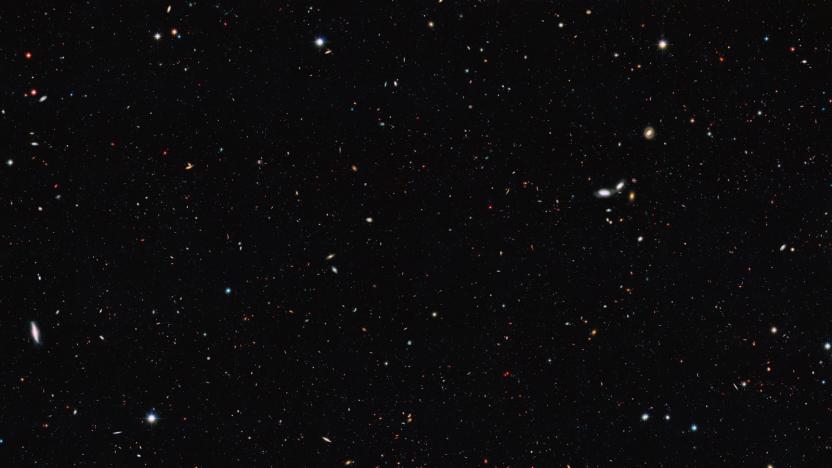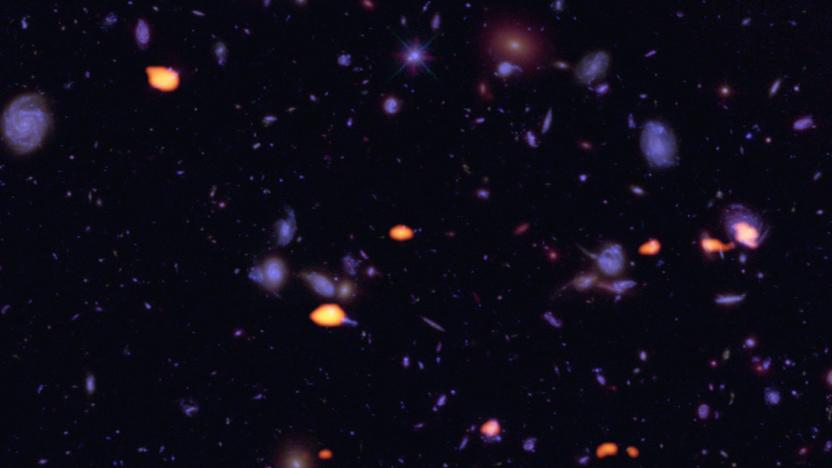hubbleultradeepfield
Latest

Universe may hold 10 times more galaxies than once thought
The observable universe was already incomprehensibly big, but it now looks to be even bigger. Astronomers have determined that are likely about 10 times more galaxies than previously thought, or between 1 trillion to 2 trillion. We just don't have the technology (or physical proximity) to detect them all, according to the researchers. They reached the conclusion after converting Hubble Deep Field images into 3D to study the number of galaxies at a given point in the universe's history, and using mathematical models to infer the possibility of galaxies that we haven't spotted. Simply speaking, the volume of galaxies seen over time doesn't make sense unless there are many we aren't aware of.

Hubble study helps explain the heyday of galaxy formation
The Hubble Space Telescope still isn't done giving up secrets of the early universe. Researchers using the Atacama Large Millimeter/submillimeter Array (ALMA) have discovered that a patch of 10 billion-year-old galaxies in Hubble's Ultra Deep Field view holds gas that helps explain the "Golden Age" of galaxy and star formation. This first completely "blind" (that is, not expecting anything) 3D millimeter wavelength search of the old universe turned up galaxies with an abundance of carbon monoxide, a hint that they were rich in the molecular gas key to creating stars.
